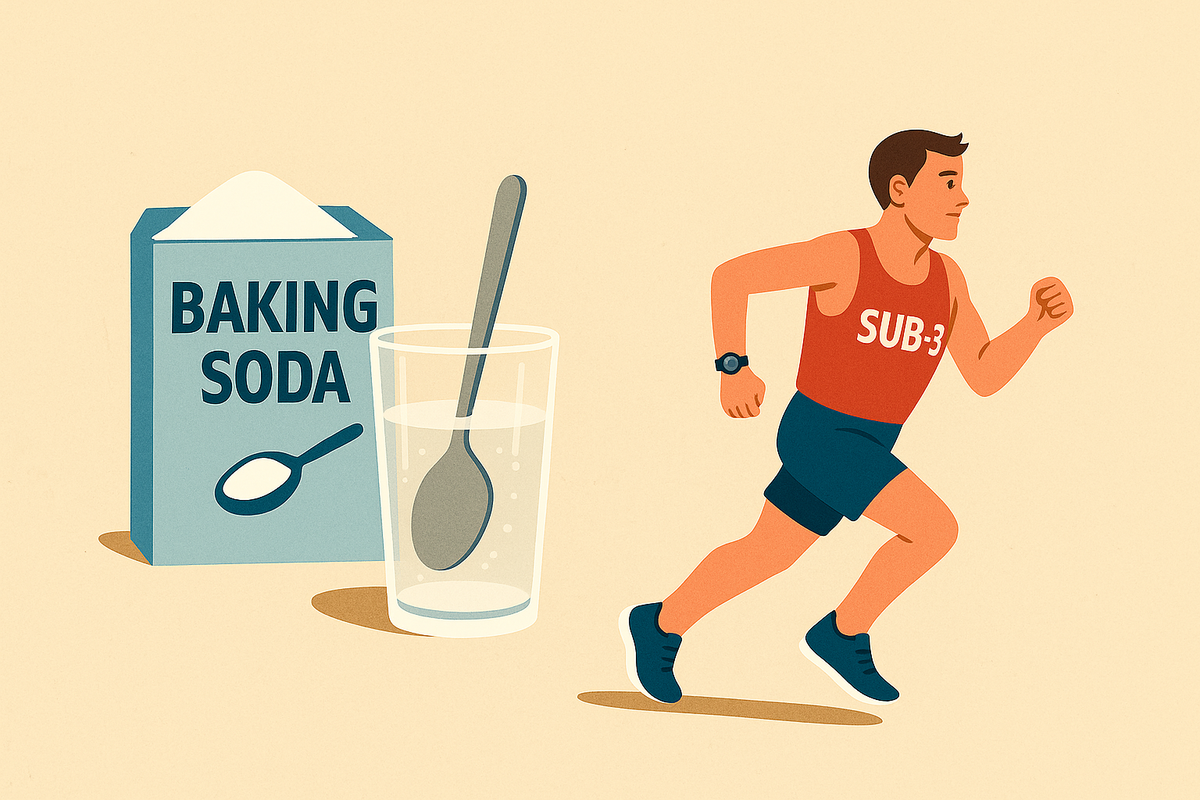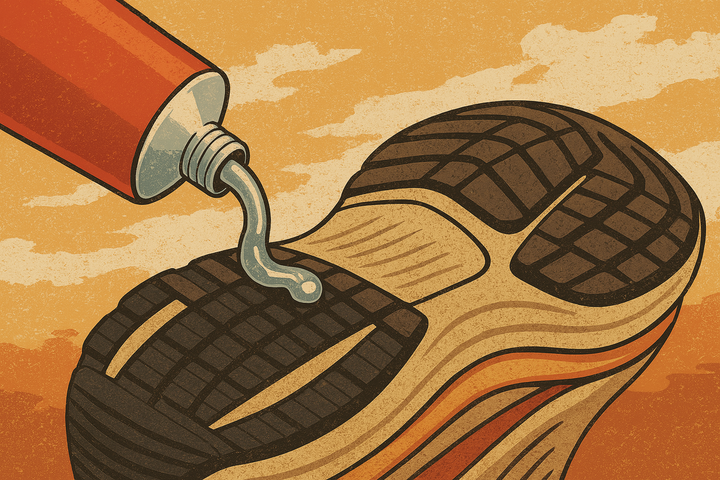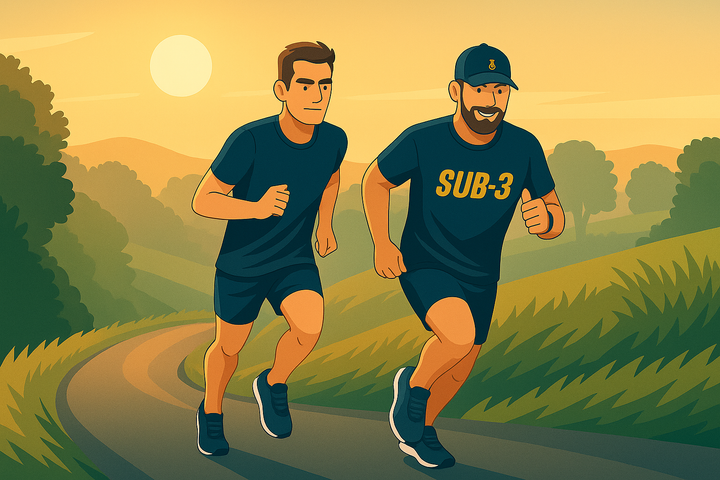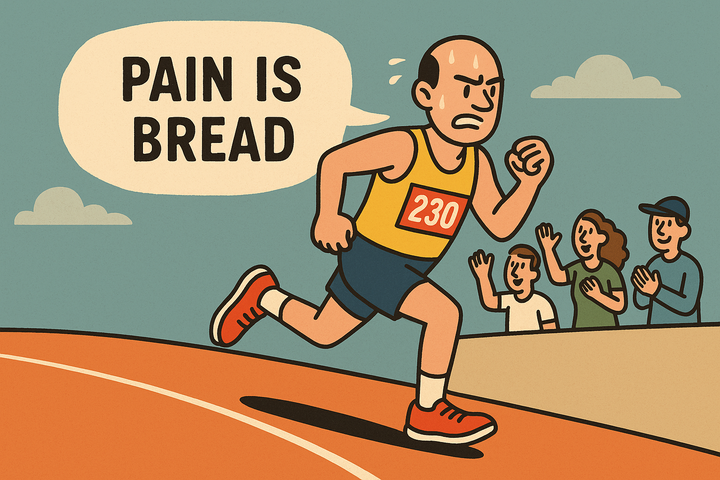Should I take bi-carb for a sub-3 marathon?
Bi-carb is legal, scientifically supported and talked about in running circles—but does it really help over 26.2 miles? And what are the risks for sub-3 athletes?

At some point, every ambitious sub-3 runner hears whispers of sodium bicarbonate - bi-carb, also known as baking soda - as a secret weapon for endurance performance. It’s listed by the International Olympic Committee (IOC) consensus statement as a permitted performance enhancer, alongside things like caffeine and creatine. It has scientific backing. It can work. But, it’s also one of the trickier legal supplements to get right.
Bi-carb is thought to delay the burning sensation in your legs during hard efforts. It acts as a buffer, neutralising the acid your muscles produce when you push beyond your lactate threshold. In theory, this helps you go harder for longer. And in short events — like 800m, 5K or repeated track reps — that can make a difference. But when it comes to the marathon, the picture is far less clear. Few studies support its use over 42.2K, and for many runners, the side effects are enough to cancel out any potential gain.
I gave it a go. The first test was a track session after taking a specially prepared bi-carb gel around two hours beforehand. The session itself was rapid - I was flying by the end - but not before three panicked toilet stops, stomach cramps so severe they felt alien-hosting, and a thirst I couldn’t shake. I’d also made the mistake of drinking a citrus-flavoured energy drink on the way in. (Note to self: citric acid and bi-carb do not mix, even Beetroot Juice is acidic.)
I’d intended to use it in an A race, but that idea was quickly shelved. I later trialled it in a smaller race, taking a small dose each day for three days beforehand and half a serving on the morning of the event. This time I avoided anything acidic - including beetroot juice and citrus gels - and had a decent run. But the thirst was just as intense, and once again, my gut was all over the place for two days afterwards.
The truth is: it might help. But only if you test it extensively in training and lower-stakes races. And even then, the odds aren’t all that great. Some comments online hint that this is a common issue with runners: “I was OK in training runs,” said one runner, “but I had really bad issues on race day. Eight visits to the portaloo.” Another wrote: “I felt like a bloated seagull that ate an Alka-Seltzer. And insanely thirsty.” Someone else put it bluntly: “The time spent on the porcelain throne ain’t worth it.”
For me, bi-carb has been scratched off the list. It doesn’t pair well with my nutrition strategy (there’s lot of things that I find work well that I need to miss out on if going down the bi-carb route), it’s unpredictable, and it messes with recovery too. I take more supplements than most, but this is one I won’t be going back to.
If you’re chasing marginal gains, bi-carb might be tempting. But for marathoners - especially those with finely tuned fuelling and hydration plans - it’s a risky move. You only get so many A races. Think carefully before you build one around the use of this substance.
5 Things to know about bi-carb and sub-3 running
1. Test, test and test again
Never take bi-carb for the first time on race day. Trial it first in training, then in a lower-priority race. Your gut needs time to adapt — and even then, it might not.
2. Don’t use kitchen-shelf powder
If you’re going to try it, use a product designed for runners, and follow the instructions to the letter. Get the dose, timing and food pairings wrong and you’ll regret it.
3. Acid is your enemy
Citrus gels, energy drinks and even beetroot juice can sometimes trigger explosive effects when mixed with bi-carb. Avoid acidic products completely in the 24 hours before use.
4. Microdosing may reduce the risk
Some runners tolerate bi-carb better when taking smaller amounts for several days rather than one big dose. But even this approach requires caution and hydration.
5. It’s not for everyone
Even with the perfect protocol, some runners still experience GI distress and intense thirst. If it doesn’t work for you, move on — there are safer ways to gain seconds.
Enjoyed this article? Help keep Sub-3 running — support us with a coffee.
To help fund the running of the site, Sub-3 is an Amazon Associate and earns from qualifying purchases. We only recommend gear or kit that has genuinely helped in our own running and that we believe is worth considering.



